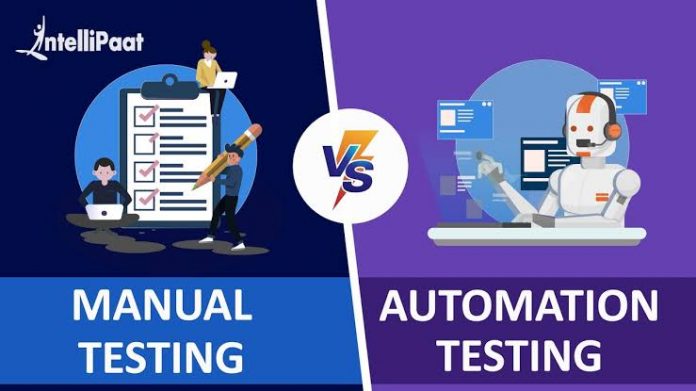Manual testing: What is it?
Program testing that is done manually by a QA Analyst is referred to as manual testing. It is done to find bugs in application that is still being developed. In manual testing, the tester examines each of the program or application’s crucial components. Without the use of any automation program testing technologies, the program testers carry out the test cases and produce the test reports in this method. It is a traditional approach to all testing kinds and aids in the discovery of faults in application. To complete the program testing process, an experienced tester is typically used.
What is testing via automation?
Testers create code or test scripts to automate the execution of tests in automated program testing. To create test scripts and validate the product, testers need the proper automation tools. The objective is to speed up the test execution process. To compare actual outcomes with projected results, automated testing solely relies on pre-scripted tests that execute automatically. This makes it easier for the tester to assess whether an application functions as planned. Without the assistance of a manual tester, automated testing enables you to carry out repetitious tasks and regression tests. Although all processes are automated, the initial testing scripts for automation still need to be created manually.
Read Also: All one needs to Know About Opals
Testing Types: Options for Manual vs. Automated Testing
Black box testing: This sort of testing only requires that the functionality be verified. Since it is hidden from the QA/testers, it does not require coding skills.
White box testing: This sort of testing involves examining an application’s internal architecture. Another name for it is “Glass box testing. Code system, branch, pathways, conditions, etc. knowledge is necessary.
Integration testing: This sort of testing involves connecting several modules and tests to examine how they interact.
System testing: With this kind of testing, we examine the functionality of the application. In this sort of testing, we evaluate a single module to identify flaws earlier in the development process. A fault can definitely be fixed if it is discovered early on. Developers carry it out.
Acceptance Testing: This form of testing requires that we take the end-acceptance user’s into account. Only if the program meets the requirements will the end user accept it.
Testing categories that could be automated.
Regression testing: Since regression testing is repetitive testing done after modifying the code, automation is the best option.
Load testing: Since automation is appropriate for it, we can use it. The application is put through testing under load to ascertain how it will behave.
Performance testing is done to test functionality and performance, so it may be included in automation.
Testing categories that cannot be automated
Exploratory testing: Due to the lack of sufficient detail in the requirement specification document, this sort of testing necessitates the use of competent testers. To test the test cases, the tester must apply his abilities and expertise.
Usability testing: When conducting usability testing, the tester must consider the perspective of the end user and evaluate how user-friendly the application is. A tool cannot truly think like a human.
Ad-hoc testing: Since the term “ad-hoc” implies that it is unplanned, a tester is crucial.
Conclusion
In the vast field of testing, manual testing still has equal weight to automation. There are numerous testing types for which we must choose between manual vs automated testing solution. Tool scripts are manually created. The tool is manually created; although it doesn’t need human intervention, it does need an instruction from a person. The restriction of any machine is that it can only perform the tasks that are specified for it (or sometimes advantage as it can not act smarter than us). Although automation solutions currently have several drawbacks, they will eventually develop and improve.Opkey is the market leader in ERP test automation with more than 30,000 pre-built test cases covering more than 14 different ERPs and 150 different technologies. Test automation for ERP applications is being redefined by Opkey. With just one click,Opkey’s no-code platform automatically creates the test cases you want and automates them, allowing both business users and IT to expand and automate testing operations.


















